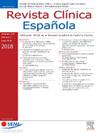在一组看似健康的人群中使用SCORE2来评估和控制心血管风险
IF 1.7
4区 医学
Q2 MEDICINE, GENERAL & INTERNAL
引用次数: 0
摘要
前言和目的心血管风险评估是减少心血管不良事件发生的重要步骤。它有助于确定健康患者谁将受益于治疗动脉粥样硬化的危险因素。作者假装在一个表面上健康的葡萄牙人群中评估心血管风险,并评估低密度脂蛋白胆固醇的控制程度。材料和方法本横断面研究使用系统性冠状动脉风险评估2算法评估了40 - 69岁葡萄牙人群的心血管风险水平。这项研究没有得到特别的资助。结果纳入表面健康患者12076例,中位年龄53.8±8.03 (min. 40;max。69),女性58.7%,男性41.3%。根据系统冠状动脉风险评估2计算,59.5%的患者属于低中度危险,35.1%属于高危组,5.4%属于非常高危组。根据心血管风险分层,低、中、高、极高心血管风险患者的ldl -胆固醇高于目标的比例分别为64.6%、94.1%和98.5%。在心血管风险高和非常高的患者中,尽管35.9%的患者接受了他汀类药物治疗,但仍有94.7%的患者ldl -胆固醇水平高于目标。在这项现实生活环境的研究中,超过三分之一的人群有高和非常高的心血管风险,其中94.7%的人高于低密度脂蛋白胆固醇的目标。该研究强调,很大一部分表面上健康的患者可以从治疗干预中获益,以降低不良心血管事件发生的风险。本文章由计算机程序翻译,如有差异,请以英文原文为准。
Uso de SCORE2 en la evaluación y control del riesgo cardiovascular en una cohorte de individuos aparentemente sanos
Introduction and objectives
Cardiovascular risk estimation is an essential step in reducing the onset of adverse cardiovascular events. It helps to identify healthy patients who will benefit most from treatment for atherosclerotic risk factors. The authors pretend to assess the Cardiovascular risk in an apparently healthy Portuguese population and evaluate the degree of control of LDL-cholesterol.
Materials and methods
This cross-sectional study assessed the cardiovascular risk level in a Portuguese population aged 40 to 69 years, using the Systematic Coronary Risk Evaluation 2 algorithm. This research received no specific funding.
Results
12076 apparently healthy patients were included, median age of 53.8 ± 8.03 (min. 40; max. 69), 58.7% women and 41.3% men. Based on the Systematic Coronary Risk Evaluation 2 calculation, 59.5% of patients belonged to the low moderate risk, 35.1% to the high risk group, and 5.4% to the very high risk group.
Based on cardiovascular risk stratification, 64.6%, 94.1%, and 98.5% of the patients with low-moderate, high, and very high cardiovascular risk were above the LDL-cholesterol target, respectively. Of those with high and very high cardiovascular risk, 94.7% were above LDL-cholesterol goal in spite that 35.9% were under statin treatment.
Conclusion
In this real-life setting study, over a third of the population had high and very high cardiovascular risk, of which 94.7% were above the LDL-cholesterol goal. The study highlights that a large part of apparently healthy patients could benefit from a therapeutic intervention to reduce the risk of the onset of adverse cardiovascular events.
求助全文
通过发布文献求助,成功后即可免费获取论文全文。
去求助
来源期刊

Revista clinica espanola
医学-医学:内科
CiteScore
4.40
自引率
6.90%
发文量
73
审稿时长
28 days
期刊介绍:
Revista Clínica Española published its first issue in 1940 and is the body of expression of the Spanish Society of Internal Medicine (SEMI).
The journal fully endorses the goals of updating knowledge and facilitating the acquisition of key developments in internal medicine applied to clinical practice. Revista Clínica Española is subject to a thorough double blind review of the received articles written in Spanish or English. Nine issues are published each year, including mostly originals, reviews and consensus documents.
 求助内容:
求助内容: 应助结果提醒方式:
应助结果提醒方式:


